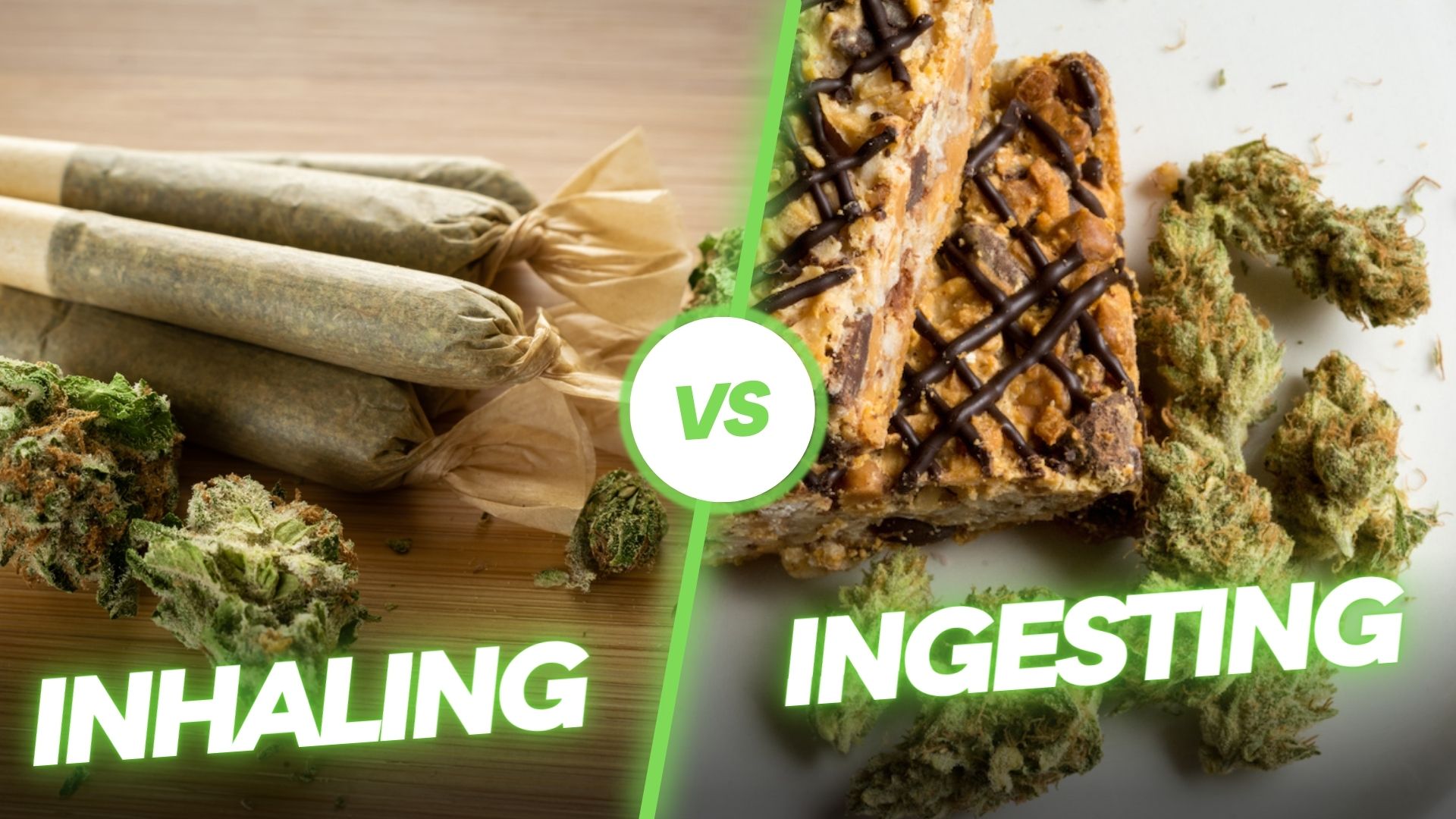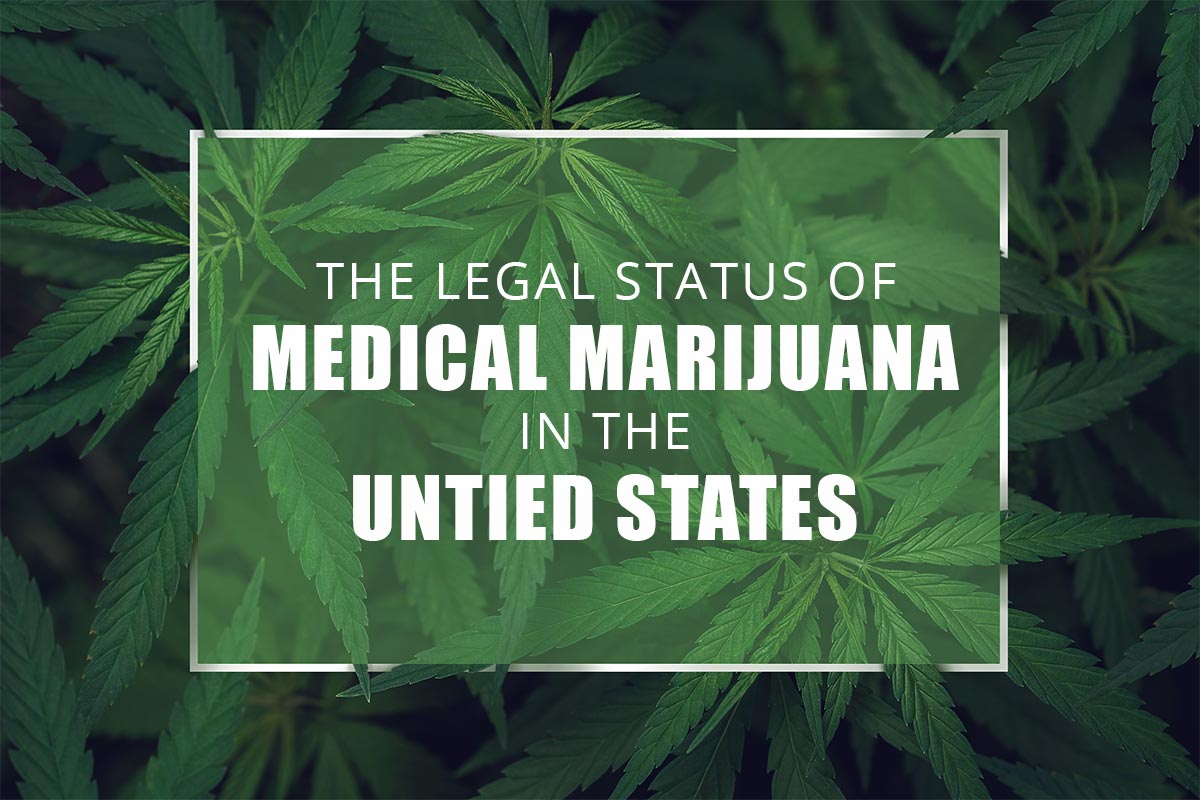Marijuana has been a polarizing topic in society for decades, but as it becomes more widely accepted and legalized across the world, understanding its various uses and effects becomes increasingly important. While smoking cannabis is certainly the most well-known method of ingestion, there are other ways to consume THC (the main psychoactive component in marijuana) that can produce vastly different effects. In this post, we’ll explore the difference between inhaling and ingesting THC and how each method affects the body. Whether you’re a longtime smoker or interested in exploring new ways to experience cannabis, this guide will provide valuable insights into what happens when you introduce THC into your system through different means.
The Science of Inhaling vs Ingesting THC
The science of inhaling versus ingesting THC is a complex topic with many considerations. When inhaling cannabis, the cannabinoids enter the lungs and are quickly absorbed into the bloodstream, producing an almost immediate effect on users. This method of use can result in a more intense high as it allows for greater amounts of THC to reach receptors within the body.
On the other hand, ingesting THC through traditional edibles or tinctures takes much longer to take effect because it must first be metabolized by the liver before entering the bloodstream. The effects tend to be less intense but last longer than inhalation due to slower absorption. Additionally, there are potential adverse effects such as over-consumption when using this method as users may not feel the effects until well after ingestion and consume too much.
It’s important for individuals interested in consuming marijuana products to understand these differences and their respective risks so they can make informed decisions about how they want to experience its effects without putting themselves in unnecessary danger. As research continues in this field, we may see more nuanced understanding surrounding which method might work best depending on various factors like medical conditions or personal preferences.
The Short-Term Effects of Inhaling THC
Inhaling THC, whether through smoking or vaping, can produce immediate effects on the body. These effects usually occur within minutes and may include feelings of euphoria, relaxation, altered perception of time and space, increased appetite, dry mouth and eyes. The intensity of these effects will depend on various factors such as the potency of the cannabis strain, the method of ingestion (smoking vs vaping), how much is consumed and individual tolerance levels.
However, inhaling THC also comes with short-term negative side effects. Smoking marijuana involves inhaling burnt plant vapor and material into your lungs which can irritate delicate tissues in your respiratory system causing coughing fits or wheezing. Ingestion methods that utilize vaporization technology still typically cause some lung irritation due to heat exposure to sensitive lung tissue. Short-Term memory impairment is another common temporary side effect caused by inhaling THC. This can make it difficult to concentrate or remember things you just did or said a few moments ago. However most short term impacts are mild and fade away relatively quickly once their consumption has stopped – often within hours).
The Short-Term Effects of Ingesting THC
Ingesting THC can have a range of short-term effects on the body. Unlike smoking cannabis, ingesting THC takes longer to feel the effects since it needs to be metabolized by the liver first. This typically takes 30 minutes to an hour for edibles and up to two hours for drinks or capsules. Once digested, the high produced from ingesting THC tends to be more intense and last longer than smoking.
Along with feelings of euphoria and relaxation, ingesting THC can also cause dizziness, nausea, and anxiety in some individuals. It’s important when trying new products that contain THC that users start with a low dose because they can vary widely in strength. Ingesting too much THC at once has been known to produce uncomfortable side effects like paranoia or even hallucinations.
Overall, while ingesting THC may take a bit longer for its effects to kick in compared with smoking, it does provide a stronger high that lasts longer. However, being mindful about dosage is key as adverse reactions can occur if too much is consumed all at once.
The Long-Term Effects of Inhaling THC
Inhaling THC through smoking or vaping can have both short and long-term effects. In the short term, a person may experience increased heart rate, dry mouth, bloodshot eyes, and impaired coordination. However, over time and with frequent use of inhaled THC, more serious side effects may develop.
Studies have shown that long-term inhalation of THC can lead to respiratory problems such as chronic bronchitis and lung cancer. Additionally, some research suggests that regular use of inhaled THC can affect memory and cognitive function over time. It’s important to note that individual factors such as frequency of use, dosage amount, and age of first use can all play a role in determining potential long-term effects.
Overall, it’s crucial for those who choose to consume marijuana – whether through inhalation or ingestion – to be aware of the potential impacts on their health and wellbeing. Consulting with a healthcare provider before starting cannabis use is recommended for individuals who are concerned about any potential risks or adverse reactions.
The Long-Term Effects of Ingesting THC
The long-term effects of ingesting THC can vary greatly depending on the individual and their consumption habits. Research has shown that frequent ingestion of high doses of THC over a prolonged period may have negative impacts on mental health, including an increased risk for anxiety and depression. Additionally, long-term use may negatively affect memory and cognitive function.
It’s important to note that ingesting THC also carries its own risks compared to smoking it. When consuming edibles or other forms of orally consumed marijuana products, the onset time can be delayed and unpredictable, leading some individuals to inadvertently consume too much. Overconsumption can result in significant impairment, which could lead to dangerous situations if not properly monitored.
Overall, it is crucial for individuals who use marijuana regularly – whether by inhalation or ingestion –to understand both the potential benefits and risks associated with all forms of cannabis consumption. As legalization continues across various regions worldwide, knowledge about safe usage practices will become increasingly important for everyone who chooses to partake in its recreational or medicinal uses alike.
How THC Affects the Brain When Inhaled
Inhaling THC through smoking or vaping allows the compound to enter the bloodstream quickly, resulting in a near-instantaneous high. THC works by binding to receptors in the brain that are responsible for regulating mood, appetite, and pain sensitivity. When inhaled, THC activates these receptors more rapidly than when ingested orally, leading to faster and more intense psychoactive effects.
Research has shown that inhaling THC can also alter certain cognitive functions such as memory retention and decision-making ability. While short-term memory impairment is commonly associated with marijuana use, some studies have suggested that long-term exposure can lead to structural changes in the brain’s hippocampus region responsible for memory consolidation.
Additionally, inhaling smoke from burning plant material carries other risks beyond those related to consumption of cannabinoids themselves. Smoking anything releases toxins into the lungs that may cause inflammation and damage over time. Those who choose inhalation as their preferred method of cannabis consumption should take precautions like using a vaporizer or water pipe to minimize respiratory harm.
How THC Affects the Brain When Ingested
When THC is ingested, it takes much longer to reach the brain than when it is inhaled. Typically, the psychoactive effects of ingested THC can take up to an hour or more before they are felt because the cannabinoids have to pass through various organs and be metabolized by the liver before reaching the bloodstream. Once in the brain, however, ingested THC can produce a stronger and more prolonged effect as compared with smoked or vaporized marijuana.
One reason for this is that when you ingest cannabis products containing high levels of THC (like edibles), your liver converts some of that compound into 11-hydroxy-THC – a form of THC that’s even more potent than delta-9-tetrahydrocannabinol (Delta-9-THC), which gives you a euphoric feeling. This increased potency and duration could potentially lead to negative side-effects like extreme anxiety or paranoia if taken in excess amounts.
Lastly, tolerance level also plays an essential role; those who regularly consume high doses of orally administered THC will develop tolerance over time making it harder for them to feel similar effects while smoking/vaping marijuana.
inhalation vs ingestion: Which Method Produces a Stronger High?
When it comes to producing a stronger high, inhaling THC is generally considered more potent than ingesting it. This is because when marijuana is smoked or vaped, the THC enters the bloodstream through the lungs and reaches the brain in just seconds. This rapid delivery of THC results in a faster onset time and a more intense psychoactive experience for users.
On the other hand, ingesting cannabis products like edibles or capsules takes longer to produce effects as they need to be metabolized by the liver before entering circulation. The digestive process can take anywhere between 30 minutes to two hours, depending on various factors such as metabolism and food consumption. Once absorbed into the bloodstream, however, ingested THC can result in longer-lasting effects that may feel stronger due to its conversion into another chemical compound called 11-hydroxy-THC.
Both methods have their pros and cons depending on personal preference and desired outcome. Inhaling may offer immediate relief from symptoms while ingesting can provide sustained relief throughout several hours but has greater potential for overdosing if not consumed responsibly due to variability in onset time and potency levels among different products. Understanding these differences allows individuals to make informed decisions about how they consume marijuana and minimize potential risks.
The Risks of Inhaling THC
While the use of marijuana has been gaining more acceptance, it is important to understand the potential risks associated with inhaling THC. Inhalation involves smoking or vaping dried cannabis leaves or concentrates that are high in THC content. The rapid absorption of THC in the bloodstream through inhalation can lead to immediate and intense effects on the body and mind.
One of the main risks associated with inhaling THC is damage to respiratory function. Smoking marijuana can cause irritants and toxins from burning plant material to enter the lungs, leading to bronchitis-like symptoms, chronic coughing, and increased mucus production. Vaping may be less harmful than smoking because it does not involve combustion; however, there have been reports linking vaping-related illnesses and deaths to black market products containing toxic additives.
Additionally, inhaling highly concentrated forms of THC such as dabs (waxes) or oils poses a greater risk for adverse effects like anxiety, paranoia, hallucinations, psychosis episodes especially for those who are inexperienced cannabis users or who have pre-existing mental health conditions. It’s essential that individuals considering using these substances educate themselves about their potency before consuming them.
The Risks of Ingesting THC
While ingesting THC can produce a longer and more intense high, it also poses significant risks to the body. One of the main concerns is the delayed onset time, which means that users may consume too much before feeling any effects and risk experiencing symptoms such as rapid heart rate, paranoia, hallucinations, and impaired coordination. Additionally, edibles are notorious for being difficult to dose correctly due to variations in potency and inconsistent labeling.
Another risk associated with ingesting THC is the potential for liver toxicity. When THC is metabolized by the liver, it produces a compound called 11-hydroxy-THC that can be more potent than its original form. This significantly increases the likelihood of overdose and adverse reactions.
While ingesting THC offers certain benefits such as longer-lasting effects and discreet consumption methods (such as edibles), users should exercise caution when experimenting with this method of ingestion due to its unpredictable nature and health risks. It’s important to start with a low dosage and allow sufficient time for onset before consuming more to avoid unwanted side effects or even hospitalization in severe cases.
Inhaling vs Ingesting: Which Method is Safer?
When it comes to consuming THC, the two most common methods are inhaling and ingesting. Inhaling involves smoking or vaping cannabis, which allows for a quicker onset of effects but can also be harsh on the lungs. On the other hand, ingesting THC through edibles or tinctures takes longer to feel the effects, but can also create a more intense and possibly longer lasting high.
In terms of safety, neither method is completely risk-free. Inhaling smoke may cause damage to lung tissue over time and can irritate existing respiratory conditions like asthma. Meanwhile, ingesting too much THC in edibles can lead to an uncomfortable overdose-like experience characterized by anxiety or paranoia. It’s important for individuals to start with low doses and understand their own tolerance levels before trying either method.
Ultimately, choosing between inhaling vs ingesting THC will come down to personal preference and individual health concerns. Consulting with a medical professional or knowledgeable budtender can help you make an informed decision about what works best for you.
The Effect on Physical Sensations
The way in which THC is consumed has a significant impact on the physical sensations experienced by the user. When marijuana is smoked, the effects are felt almost immediately, making it a popular method for those seeking immediate relief from pain or anxiety. Inhaling cannabis smoke causes the cannabinoids to enter directly into the bloodstream through the lungs resulting in rapid onset of effects.
However, inhaling smoke can also cause irritation and damage to respiratory organs like lungs and bronchial tubes. On the other hand, ingestion produces effects that are slower to set in but tend to last much longer than smoking. Edibles take time for digestion once they get into your system whereas smoking doesn’t go through all these processes before entering your bloodstream. Users who consume edibles report experiencing body-centered effects such as tingling sensations or muscle relaxation rather than just mind-altering shifts of energy typically produced when you smoke.
Therefore, understanding how different methods of consuming THC affect physical sensations is crucial in controlling and utilizing marijuana’s therapeutic properties best suited for individual needs while minimizing adverse health impacts Cbd oil may be an alternative to consider since its made by extracting thc compounds via solvent instead of burning plant material reducing risk factors associated with inhaling combustible materials present with traditional methods.
The Effect on Mood & Emotions
The use of cannabis has been linked to a range of emotional and mood-related effects. THC, the primary psychoactive component in marijuana, can have varying impacts on individuals depending on how it is ingested. When smoked or vaped, THC enters the bloodstream through the lungs and quickly reaches the brain. The rapid onset of effects can produce feelings of euphoria and relaxation as well as temporary relief from anxiety or stress.
On the other hand, ingesting THC through edibles or tinctures takes longer for its full impact to be felt due to digestion taking place in your body first. As such a person may need more time before experiencing calmness or euphoria brought by THC’s effect. While inhaling might provide an instant high but with “quick highs” followed by equally fast drops causing people’s emotions to crash down decreased mood, Anxiety while ingestion provides long-lasting relief if used properly resulting in elevated moods over some time after consumption rather than short bursts.
Therefore knowing whether smoking weed vs eating edibles will affect someone’s emotions differently are vital when considering using cannabis as treatment for illnesses such as depression where symptoms often include prolonged states low energy or failure experience pleasure which cannabinoids/THC alter very immensely once consumed accordingly.
The Impact on the Digestive System
The impact on the digestive system is one of the most significant differences between inhaling and ingesting THC. When marijuana is smoked, the THC in it quickly enters the bloodstream through the lungs and travels to the brain, producing immediate effects such as euphoria, altered perception, increased appetite, and relaxation. However, smoking can also cause respiratory problems and lung damage.
When THC-containing products are eaten or swallowed (ingested), they pass through the digestive system before entering the bloodstream. This slow process can take up to 2-3 hours for users to feel any effects but once it begins working; they may experience a stronger high that lasts longer than when smoking. Furthermore, ingested cannabis has been known to produce different side effects compared with inhaled marijuana including dizziness and nausea when taken in high doses. Thus although edibles provide some benefits – prolonged effect duration for instance – individuals need to be cautious about dosage levels while consuming them which significantly impacts their digestive health.
The Impact on the Lungs
When it comes to the impact of marijuana on the body, one key area of concern is its effect on the lungs. While smoking cannabis may produce a quick and powerful high, it also exposes the delicate tissue in your lungs to harmful toxins and chemicals that can cause damage over time. Regular smoking has been shown to increase the risk of respiratory infections, chronic bronchitis, lung cancer and other lung diseases.
On the other hand, ingesting THC through edibles or oils bypasses the lungs entirely by entering directly into your bloodstream through digestion. This method produces a slightly different high than inhalation as it takes longer for effects to kick in – usually around 1-2 hours compared to nearly instantaneous when smoked – but can last much longer up to several hours depending on dosage. Additionally, edible products like brownies or gummies tend to contain far higher levels of THC than traditional joints which means users run a greater risk of consuming too much if they don’t take care with dosing.
While inhaling THC is undoubtedly still popular among users for its speed and potency delivery system action; long-term use along with negative health implications make exploring alternative ingestion methods such as cannabis-infused edible products an increasingly attractive option that warrants further research scrutiny going forward as laws evolve globally towards legalization giving many new options for regulated consumption measures being implemented accordingly over time periods successfully ensuring safer usage practices by all involved parties going forwards.
Pros and Cons Combining Inhaling & Ingesting
Combining the methods of inhaling and ingesting THC can offer some unique benefits for cannabis users. Inhaling allows for quick absorption into the bloodstream, providing immediate effects that are felt within minutes. This method also allows for greater control over dosage as users can stop smoking or adjust their vaporizers as soon as they feel satisfied with their high. On the other hand, ingestion through edibles or capsules provides longer-lasting and more intense effects compared to inhalation, making it ideal for medical cannabis patients who require constant pain relief throughout the day.



